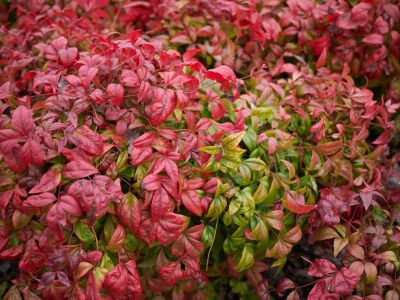Heavenly bamboo care is simple and straightforward. Once you’ve learned the basics of caring for heavenly bamboo, you can enjoy this attractive plant in your landscape during all seasons.
About Heavenly Bamboo Plants
If you’re thinking of growing heavenly bamboo, choose a location with full sun. Heavenly bamboo plants are attractive as part of a shrub border, in groupings, or even as a standalone focal point. Small white flowers appear in late spring to summer in USDA garden zones 6 though 9 where it is hardy. Standard heavenly bamboo plants, Nandina domestica, can grow to 8 feet (2 m.) in maturity with a spread as wide. Most vibrant foliage color results from growing in full sun. Shorter cultivars of heavenly bamboo plants, such as Wood’s Dwarf and Harbour Dwarf, usually reach about 18 inches (46 cm.). These more compact types of heavenly bamboo plants work well as edging plants around large beds. The cultivar Firecracker is a dwarf with brilliant, red fall foliage. Whether short or tall, Nandina plants are prized for their deep maroon color in fall and winter. Clusters of red berries abound and are useful for indoor holiday arrangements. Berries should be removed before the birds get to them, however, as a responsible part of caring for heavenly bamboo. Seeds spread by birds tend to easily sprout among native vegetation, giving heavenly bamboo plants the reputation of being invasive.
Heavenly Bamboo Care
When choosing the location for growing heavenly bamboo, make sure soil is well draining. Amend the soil with well composted materials to improve drainage, if needed. Rich soil is preferable for growing this plant. Remember, a full sun location makes leaf color more vibrant. Feed and water Nandina plants as you care for surrounding specimens. If leaves of the Nandina plant begin to yellow, treat with nitrogen-based fertilizer. The multiple stems of this plant are called canes. A fun task when growing heavenly bamboo is the pruning of heavenly bamboo canes. When pruning heavenly bamboo, take the canes to different levels. This will encourage a fuller appearance and keep the shrub from looking skimpy at the bottom. Nandina plants are best allowed to grow in natural form, however, never sheared or clipped as a formal hedge.
